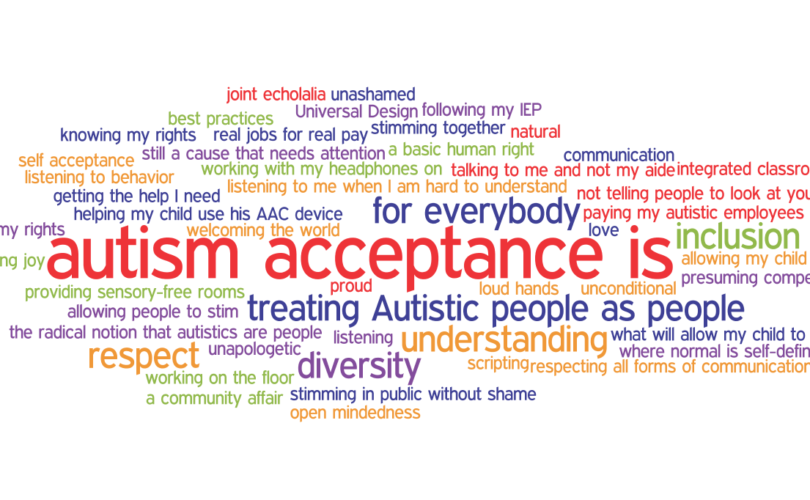Autism Acceptance Month
Here we are in April again. The last year has both flown by and crawled by at the slowest pace possible. Nevertheless, April is here and it is time to talk about autism. Last year I wrote about autism awareness month, and this year, we discuss autism acceptance. A small change with a huge impact.
What is the difference between awareness and acceptance? Awareness means you know it exists, you can identify it, you know something is happening, you cope with it or deal with it, or tolerate it. Acceptance means you connect personally and learn more, you talk to people and gain understanding, compassion and sensitivity. It means you offer help and support without judgement; you embrace it, grow from it, and build relationships with someone who has it.
In order to increase acceptance of people with autism, we’re going to discuss the importance of teaching our children about autism and teaching them how they can help.
Autism Spectrum Disorder (ASD) is developmental disability characterized by difficulties with communication, social skills, adaptive skills, and behavior. The most recent number from the CDC report that 1 in every 54 children today are diagnosed with ASD.
Each person with autism has a distinct set of strengths and challenges. The ways in which people with autism learn, think and problem-solve can range from highly skilled to severely challenged. Some people with ASD may require significant support in their daily lives, while others may need less support and, in some cases, live entirely independently.
What does this mean for a parent of a typically developing child? More and more children are being put into “mainstreamed classrooms” for part or the entirety of their day at school. Chances are your school-aged child has a classmate (or many) who have a diagnosis of ASD.
Children with ASD present with higher rates of depression and suicide than their typically-developing peers (Mayes et al, 2013), and the rates of bullying of children with ASD are increasing at an alarming rate (Cappadocia et al, 2011). One reason for this may be that not only do children with ASD not know how to interact with their peers; their peers do not know how to interact with them.
As parents of typically-developing children, we can give our kids the tools they need to successfully interact with children on the spectrum. We already teach our kids that while some people may be different than we are, that doesn’t mean we can’t be friends. We teach tolerance of race, sex, religion, etc., we need to add disabilities and functioning levels to that list.
Children with ASD are expressly taught everything from how to maintain eye contact during a conversation, to how to keep appropriate distance between themselves and peers during social interactions. They work on how to ask questions about the interests of others, remain on topic, change the topic when appropriate, share things about their interests without oversharing, the list of skills that are expressly taught to a child with ASD can be endless. These skills and behaviors are ones that our children did not necessarily need to be told, they learned through observing this behavior from others. A new study funded by the National Institutes of Health (NIH) suggests that children who receive social skills training that involves not only training the child with ASD how to interact with others, but their peers who interact with them yields significantly better results than treatment which just focuses on the child with ASD.
By teaching our children how to interact with their typically and not-so-typically developing peers, we can increase their confidence in facilitating and maintaining social interactions with others. One way we can begin the lesson is by having a conversation about their peers, the fact that they may need a little more help than others, and that by being patient with them and sharing in their interests, they can make a very special friend.
Give your child ideas about things they can say to their friends who are on the spectrum. Explain how they may learn differently or speak differently and that is the same as a person who may write with their left hand instead of their right, or use glasses to see, or a hearing aid to hear. By pointing out small differences between people and normalizing these differences, we can help our children to then move past these differences and accept them. These skills will translate to a child who is more accepting of others, and a child who is able to make a meaningful impact in the lives of the people around them, just by making a friend.
Suicidal Ideation Among People With Autism
https://doi.org/10.1016/j.rasd.2012.07.009
Bullying Experiences Among Children and Youth with Autism Spectrum Disorders
https://link.springer.com/article/10.1007%2Fs10803-011-1241-x
CDC’s numbers on autism
https://www.cdc.gov/ncbddd/autism/data.html


